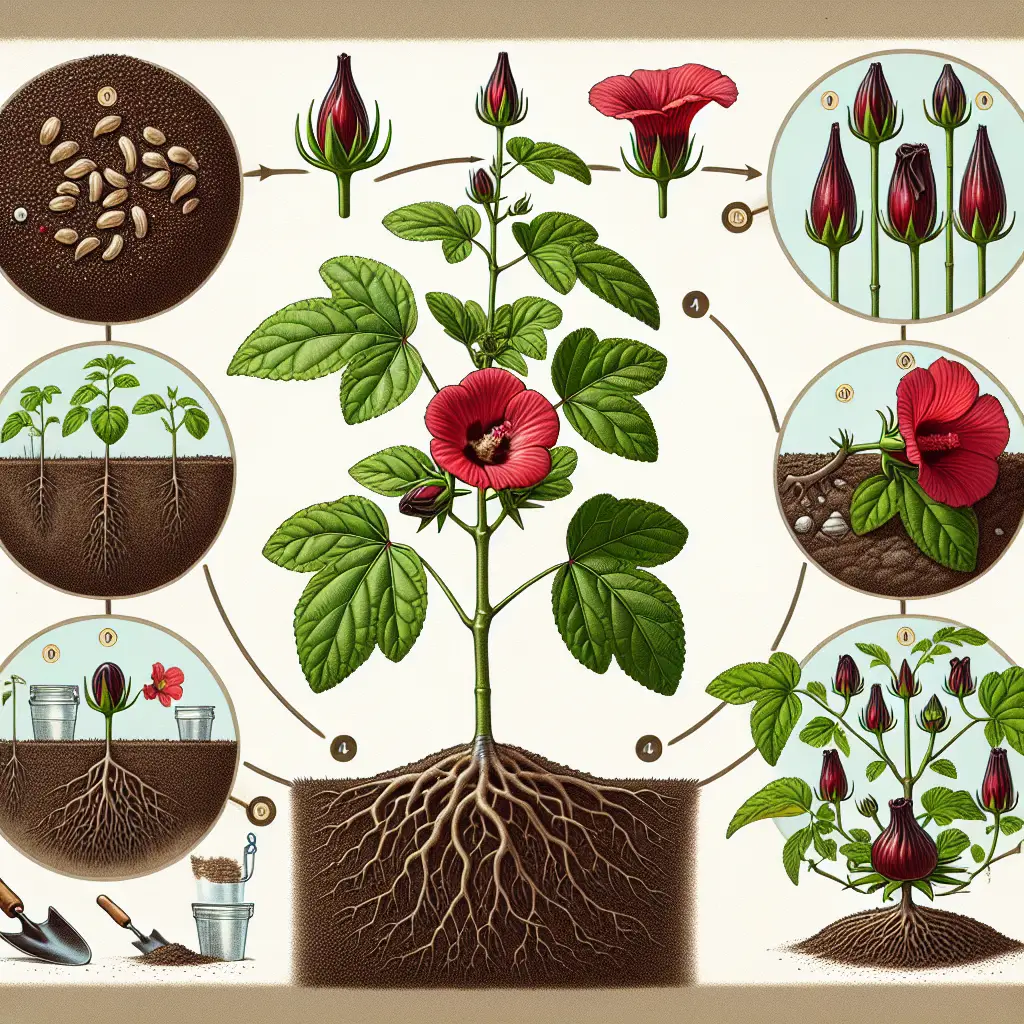Growing Passion Fruit Vines for Exotic Flavors
Updated June 16, 2024 at 8:57 pm

Essentials for Growing Passion Fruit Vines
-
Pet Friendly:
Passion fruit vines are non-toxic to pets. That being said, it’s always wise to supervise pets in the garden to prevent any accidental ingestion of plants.
Light Requirements:
These vigorous vines thrive in full sun. Aim for at least 6 to 8 hours of sunlight for optimal growth and fruit production.
Watering:
Passion fruit vines require consistent moisture. Water them deeply at least once a week or more often during hot, dry periods.
Humidity:
Passion fruit vines enjoy moderate to high humidity. Mist the leaves regularly if you’re growing them in drier climates.
Temperature:
These tropical plants prefer warm temperatures between 68 to 82 degrees Fahrenheit, though they can tolerate a range from 50 to 90 degrees.
Difficulty:
With the right conditions and care, passion fruit vines are moderately easy to grow, making them a delightful challenge for gardeners.
Choosing the Right Variety for Your Garden
There are several varieties of passion fruit vines to choose from, each with its unique flavor and growth habits. The most widely known are the purple passion fruit (Passiflora edulis) and the yellow passion fruit (Passiflora edulis flavicarpa).
Purple passion fruit, which is slightly smaller, prefers cooler temperatures and is generally more aromatic. On the other hand, yellow passion fruit is larger, more tolerant to warmer climates, and has a slightly more acidic taste. You’ll want to pick a variety that suits your climate and taste preferences. Local nurseries often carry varieties that are well-suited to your region.
Planting Your Passion Fruit Vine
When planting a passion fruit vine, choose a location with well-draining soil and support for the vine to climb, such as a fence or trellis. Space them about 5 to 15 feet apart, depending on the variety. This gives the vines ample room to grow without competing for nutrients or sunlight.
Amending your soil with compost or well-rotted manure can provide a great start for the vines, enhancing soil fertility and structure. You might want to test your soil’s pH level, too, as passion fruit prefers slightly acidic to neutral soil, with a pH between 6.5 and 7.5.
Maintenance and Care for Healthy Growth
As your passion fruit vines grow, regular pruning is essential. It encourages air circulation, deters pests, and promotes growth of the fruit-bearing branches. Prune in the early spring to remove dead wood and in the late autumn to shape and control the size of the vine.
Feeding your vines is another vital aspect of care. A balanced, slow-release fertilizer with equal parts of nitrogen, phosphorus, and potassium (known as N-P-K) applied at the beginning of the growing season can work wonders. A popular choice among gardeners is the Espoma Organic Garden-tone 3-4-4, which is crafted specifically for vegetable gardens but works perfectly for fruiting vines like passion fruit.
Find This and More on Amazon
Battling Pests and Disease
Like many fruiting plants, passion fruit vines can be susceptible to pests such as aphids, mites, and fruit flies. Regularly inspect the vines for any signs of infestation and treat with organic insecticidal soap or neem oil when necessary. Knowing the signs, like sticky leaves for aphids, helps you intervene before it’s too late.
Diseases such as fungal infections can also pose a threat, especially in humid climates. Ensuring proper pruning practices and avoiding overhead watering can greatly reduce the risk. For fungal issues, products like Bonide’s Liquid Copper Fungicide have been well-reviewed for their effectiveness.
Find This and More on Amazon
Harvesting and Enjoying the Fruits of Your Labor
Harvesting passion fruits at the right time is crucial for the best flavor. The fruit is ready when it has turned from green to its mature color, depending on the variety, and the skin begins to wrinkle. At this stage, the sugars have developed, and the aromatic flavors have intensified.
Once harvested, you can cut them open and scoop out the tangy pulp to eat fresh, or use it in juices, desserts, and savory dishes. Passion fruit pulp is also prized for its health benefits, being rich in vitamins, minerals, and antioxidants. The versatility of this exotic fruit makes it a delightful addition to a diverse range of dishes.
Encouraging Pollination
For fruit production, passion fruit vines require pollination. While in some regions, bees and hummingbirds will do the job, in others, especially where these natural pollinators are scarce, hand pollination might be necessary. This involves transferring pollen from the male parts of the flower to the female ovary using a small brush, mimicking the action of bees.
In areas with poor bee populations, attract more pollinators by planting companion flowers or installing a bee hotel to encourage local bee populations. It’s a simple yet effective way to boost your garden’s ecosystem and fruit yield.
Common Issues You Might Encounter
One common issue with passion fruit vines is a lack of fruiting, which could be due to inadequate pollination, over-fertilization (leading to excessive foliage growth at the expense of fruit), or simply plant youth. Vines usually start fruiting after 1-3 years of growth, so patience is key.
Browning leaves can indicate a range of problems from nutrient deficiencies to water stress. Ensure you’re keeping up with regular feeding and watering schedules and consider a soil test to address any specific nutrient needs the plant might have.
Conclusion and Content Area 2 of 3
Overcoming Adverse Weather Conditions
Passion fruit vines, native to subtropical regions, can be sensitive to extreme weather such as frost or prolonged high temperatures. If your area is prone to such conditions, it’s wise to grow passion fruit in a spot that offers some protection, be it from a south-facing wall or the shelter of taller plants.
During cold snaps, protection can be provided with frost cloths or blankets. Conversely, during heat waves, shade cloths can help mitigate the stress on the plants. Keeping the roots cool with a generous layer of mulch also aids in retaining soil moisture and temperature regulation.
Irrigation and Water Management
Although passion fruit vines need regular watering, too much moisture can lead to root rot and other diseases. Incorporating a drip irrigation system can facilitate precise water delivery to the root zone, avoiding excess moisture on the foliage which may encourage fungal growth.
Additionally, by monitoring the weather and adjusting your watering schedule accordingly, you can prevent overwatering. A good rule of thumb is to check the soil moisture at about 2 inches deep; if it’s dry, it’s time to water.
Soil Health and Nutrition
Good soil health is critical for the successful cultivation of passion fruit vines. Regularly adding organic matter can improve soil texture and fertility. A well-composed compost or a commercial organic product such as FoxFarm’s Happy Frog Soil Conditioner can vastly improve your soil’s structure.
This conditioner is particularly beneficial in enhancing aeration and drainage, which passion fruit vines love. Based on user reviews, many gardeners have observed stronger growth and increased fruit yield after incorporating it into their soil management routine.
Find This and More on Amazon
Training Your Vines for Best Results
Training your passion fruit vines on a sturdy trellis or support system is essential for their development. Ensuring that the vines have ample support will encourage healthy growth patterns and ease of access for maintenance, pruning, and eventually, harvesting.
Using ties that don’t restrict growth, such as soft garden ties or strips of cloth, can help guide the vines in the desired direction. Remember to leave some room for growth to prevent girdling the stems.
Seasonal Care Breakdown
As the seasons change, so do the needs of your passion fruit vines. In the spring, they may require more frequent watering and feeding as they exit dormancy. Summer is all about monitoring for pests and diseases, ensuring consistent moisture, and enjoying the fruits of your labor.
In autumn, reduce watering as growth slows down and prepare the vines for cooler weather. Winter care often means protecting the plants from frost and performing structural pruning to facilitate a strong framework for the next growing season.
Integrating Passion Fruit Vines into Your Landscape
Aside from their delicious fruits, passion fruit vines can add beauty to your garden. With their lush leaves and intricate flowers, they make excellent living screens or simply beautiful additions to trellises and arbors. You can integrate them into edible landscapes or ornamental gardens, benefiting from both their aesthetic appeal and their produce.
When planting for landscape use, ensure the surrounding plants have similar water and light requirements to avoid competition and keep your passion fruit vines thriving.
Long-term Sustainability of Your Vines
To ensure the long-term success of your passion fruit vines, it’s essential to consider sustainability practices. Composting, rainwater harvesting, and using organic pest control methods not only benefit your plants but also contribute to a healthier ecosystem within your garden.
Such practices allow you to enjoy your passion fruit vines for years to come while minimizing your environmental footprint. Creating a sustainable system may require initial effort, but the rewards in terms of plant health and environmental impact are significant.
Joining a Community of Fellow Growers
Finally, becoming part of a gardening community, whether online or locally, can be incredibly beneficial. Sharing experiences, tips, and fruit with fellow passion fruit growers can enrich your gardening journey, offering support and new knowledge.
Whether you’re troubleshooting an issue or celebrating a successful harvest, fellow enthusiasts can provide insights that are practical and helpful. Gardens tend to flourish where there is a shared passion and exchange of information.
Content Area 3 of 3
Troubleshooting Unusual Plant Behavior
If your passion fruit vines display signs of distress, it might be time to play detective. Yellowing leaves can be a symptom of overwatering or underfeeding, while leaf drop may signal temperature stress.
Adjusting your care routine to address these issues often resolves them. For instance, if overwatering is the cause, allowing the soil to dry out more between watering sessions should help. Conversely, if the plant is underfed, a dose of suitable fertilizer could be the remedy.
Benefits of Growing Passion Fruit Vines
Growing passion fruit vines comes with a host of benefits. The plants can create a pleasant, aromatic environment in your garden. They also attract pollinators, which benefits the entire ecosystem.
Moreover, there are health benefits from the fruits themselves—passion fruit is a good source of dietary fiber, vitamin C, and plant compounds that promote wellness.
Endless Culinary Possibilities
Passion fruit isn’t just for eating fresh. It’s a versatile ingredient that can be transformed into preserves, sauces, or dressings, adding an exotic touch to your cuisine.
Consider trying recipes for passion fruit mousse, curd, or even a savory sauce to accompany seafood. The tanginess can complement and elevate a variety of dishes.
Environmental Impact and Considerations
As a gardener, being mindful of the environmental impact of your activities is crucial. Using non-invasive varieties, practicing water conservation, and opting for organic fertilizers and pest control can ensure your passion fruit vines are as eco-friendly as they are prolific.
By being environmentally conscious, you safeguard not only the health of your vines but also the well-being of the local flora and fauna. This thoughtful approach benefits the whole community.
Wrapping Up
Growing passion fruit vines can be a joyous and rewarding endeavor. With careful selection of the variety, proper planting, and diligent care, you can enjoy these exotic flavors right from your garden.
Remember, success with passion fruit vines isn’t just about the delicious fruit—it’s also about the journey of nurturing these beautiful plants and the satisfaction of overcoming gardening challenges. May the tips shared here help you achieve a bountiful and fragrant harvest, year after year.
Shop more on Amazon

